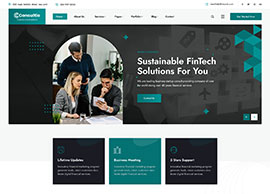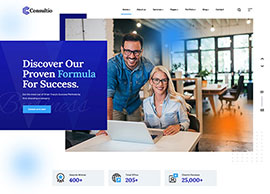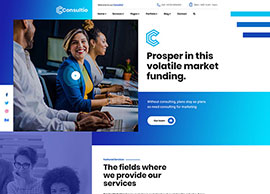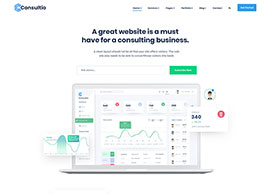“I’ll start investing when I get my next big promotion.” “You need lakhs of rupees to make any real money in the stock market.” “Investing is for rich people.” If you’ve ever had thoughts like these, you are not alone. One of the greatest and most persistent myths in personal finance is that you need a large amount of capital to begin investing. This single belief prevents millions of people from starting their journey to financial freedom. But what if we told you it’s completely untrue? This guide is here to bust that myth once and for all and show you that the most important factor for investment success isn’t how much money you have, but how much time you have.
Part 1: Busting the “Big Capital” Myth
The image of an investor as a wealthy tycoon in a suit, shouting orders on a trading floor, is a relic of the past. This old perception came from a time when investing was genuinely difficult and expensive. High brokerage fees, the need for large minimum investments, and the complexity of physical paperwork created significant barriers to entry for the average person.
Today, the landscape is entirely different. Technology has democratized investing. Digital brokers, mobile trading apps, and innovative investment products have made it possible for anyone to start with an amount as small as a pizza dinner. The question is no longer “How much money do I need to be an investor?” The real question is, “What can I start with today?”

The myth of needing huge capital vs. the reality of starting small and growing.
Part 2: The Power of ‘Small’: Why Starting Early Beats Starting Big
To understand why starting is so critical, we need to talk about the single most powerful force in finance: compounding. Albert Einstein reportedly called it the eighth wonder of the world. In simple terms, compounding is the process of earning returns not only on your initial investment but also on the accumulated returns from previous periods. It’s a snowball effect: as your investment grows, it generates even more earnings, causing the snowball to grow faster and faster.
The key ingredient for compounding to work its magic is time. The longer your money stays invested, the more powerful the snowball effect becomes. Let’s illustrate this with a powerful case study.
Case Study: Anjali (The Early Starter) vs. Ben (The Late Starter)
Let’s consider two friends. Both want to build a retirement corpus, and their investments generate an average return of 12% per year.
- Anjali, the Early Starter: She starts investing just ₹5,000 per month at age 25. She is disciplined and invests for 10 years, stopping at age 35. Her total investment is ₹6 lakhs. She then lets this amount grow without adding any more money.
- Ben, the Late Starter: He waits until he’s earning more. He starts investing at age 35, putting in ₹10,000 per month (double Anjali’s amount). He invests consistently for the next 25 years until he reaches age 60. His total investment is a massive ₹30 lakhs.
Who do you think has more money at age 60? Let’s look at the numbers.
| Investor | Starting Age | Monthly Investment | Total Amount Invested | Corpus at Age 60 |
|---|---|---|---|---|
| Anjali (Early) | 25 | ₹ 5,000 for 10 years | ₹ 6,00,000 | ~ ₹ 1.88 Crores |
| Ben (Late) | 35 | ₹ 10,000 for 25 years | ₹ 30,00,000 | ~ ₹ 1.89 Crores |
The result is staggering. Despite investing five times less money, Anjali ends up with nearly the same amount as Ben. The 10 extra years her money had to grow allowed the power of compounding to do its work. This proves that the cost of waiting is far greater than the benefit of starting with a larger sum later. Your best asset is not your capital; it’s your time in the market.

Anjali’s early start gave her a massive advantage, even with smaller investments.
Part 3: Your ‘Starter Pack’: Where to Invest with Small Amounts
Now that we’ve established that starting small is not only possible but powerful, where can you actually put that money? Here are some of the most accessible and effective options for beginners in India.
1. Systematic Investment Plans (SIPs) in Mutual Funds
This is, without a doubt, the number one recommended path for any new investor. A mutual fund pools money from many investors to invest in a diversified basket of stocks or bonds. A SIP allows you to invest a fixed amount every month automatically.
- Minimum Investment: You can start a SIP with as little as ₹100 or ₹500 per month.
- Why it’s great: It builds discipline, gives you instant diversification, and benefits from “rupee cost averaging” (you buy more units when the market is low and fewer when it’s high).
| Monthly SIP | Potential Corpus in 10 Years (at 12% p.a.) | Potential Corpus in 20 Years (at 12% p.a.) |
|---|---|---|
| ₹ 1,000 | ~ ₹ 2.3 Lakhs | ~ ₹ 10 Lakhs |
| ₹ 2,000 | ~ ₹ 4.6 Lakhs | ~ ₹ 20 Lakhs |
| ₹ 5,000 | ~ ₹ 11.5 Lakhs | ~ ₹ 50 Lakhs |
2. Direct Equity (Stocks)
You can also buy shares of individual companies. While some famous stocks might be expensive, there are many fundamentally sound companies whose shares trade for less than ₹500.
- Minimum Investment: The price of one share.
- A Word of Caution: This path requires more research and carries higher risk than mutual funds. It’s often recommended to start with SIPs to build a core portfolio before venturing into direct stock picking.
3. Exchange Traded Funds (ETFs)
Think of an ETF as a hybrid. It’s a basket of stocks like a mutual fund (e.g., an ETF that tracks all 50 stocks of the Nifty 50), but it trades on the stock exchange like a single stock.
- Minimum Investment: The price of one unit of the ETF.
- Why it’s good: It offers diversification at a very low cost.
Part 4: How to Find the Money to Invest
It’s easy to say “start small,” but what if you feel like you have no money left at the end of the month? Finding your first investment amount is often a matter of awareness and small adjustments.
The 50/30/20 Budgeting Rule
A simple framework to start with is the 50/30/20 rule:
- 50% of your income for your Needs (rent, bills, groceries).
- 30% of your income for your Wants (entertainment, dining out, hobbies).
- 20% of your income for your Savings & Investments.
Even if you can’t hit 20% right away, this gives you a target. Start by tracking your expenses for one month to see where your money truly goes. You might be surprised by the “leaks” in your budget.
The ‘Coffee Cup’ Effect
Small, seemingly insignificant daily expenses can add up. A ₹150 coffee or snack every day amounts to ₹4,500 per month. By making small cutbacks on discretionary spending, you can easily free up enough money for a significant SIP.
Conclusion: Your Time is Now
The amount of money you need to start investing is not the lakhs you might have imagined. It’s ₹5,000, it’s ₹1,000, it’s even ₹500. The single most important factor for building wealth is not the size of your initial capital but the length of your runway. The sooner you start, the more time you give the incredible power of compounding to work for you. Don’t wait for the “right time” or the “right amount.” The right time is now, and the right amount is whatever you can start with today.
Your Journey Starts with a Single Step
The best time to plant a tree was 20 years ago. The second-best time is now. Take the first and most important step towards your financial freedom by opening your investment account today.














































